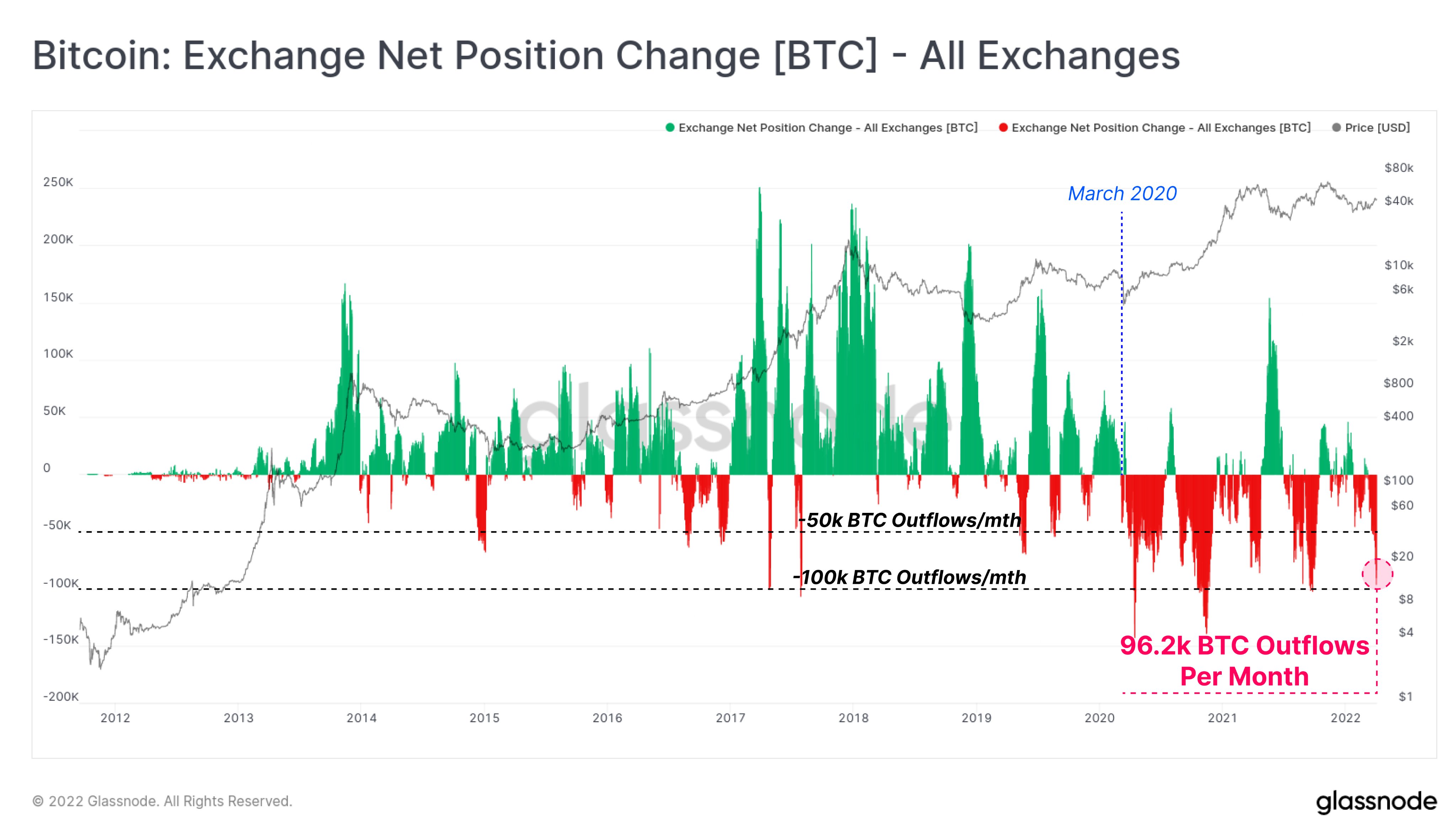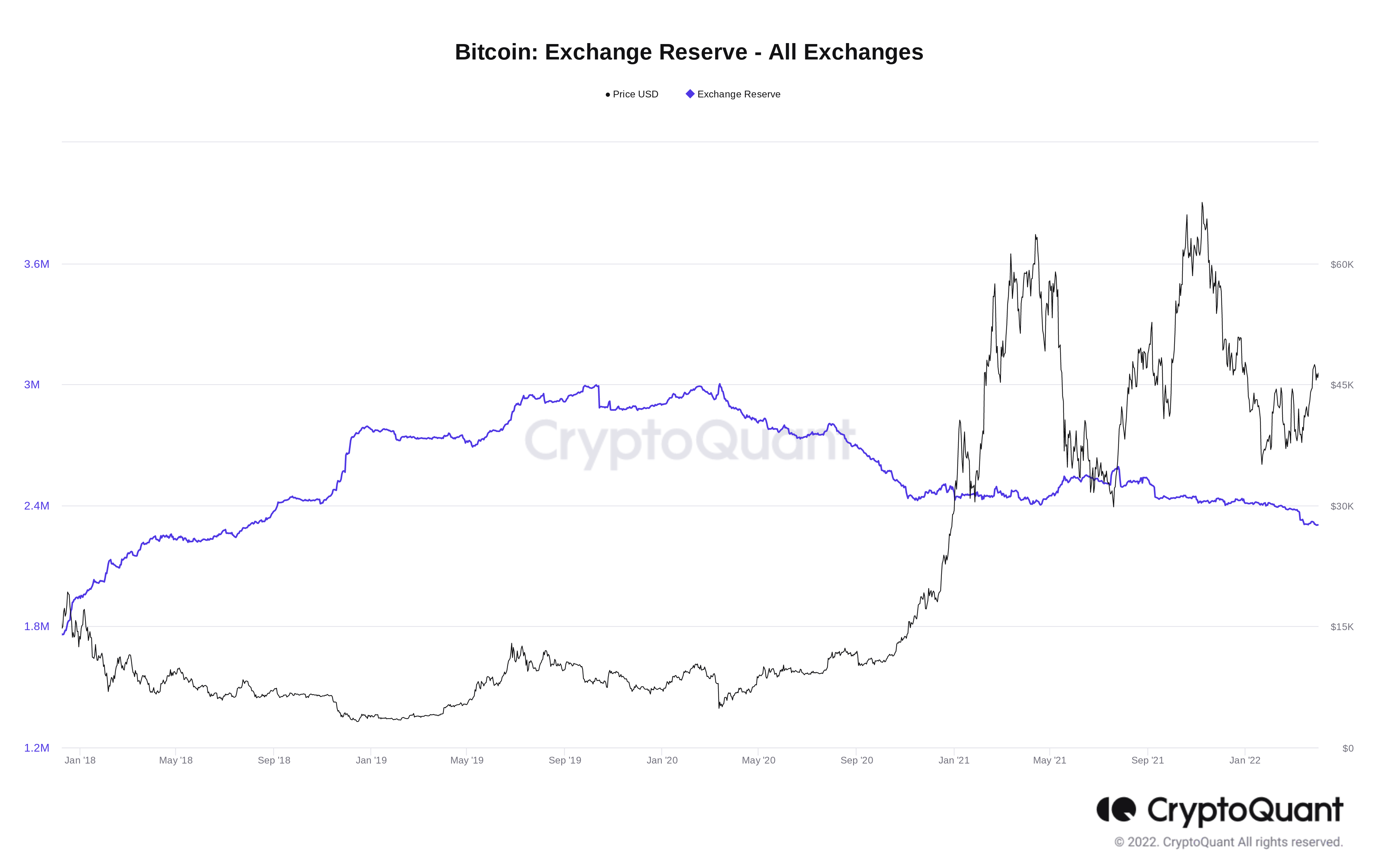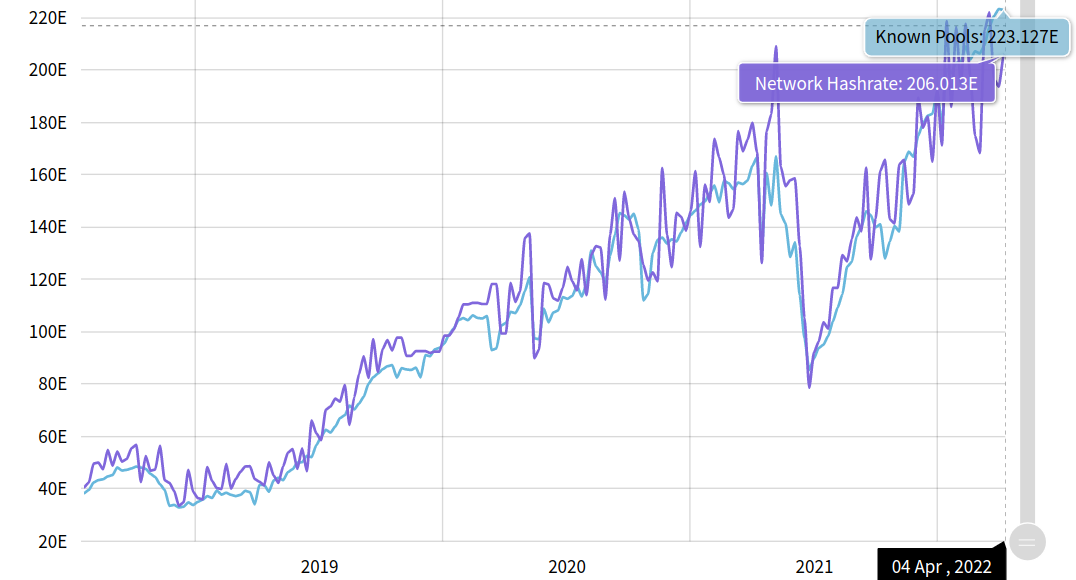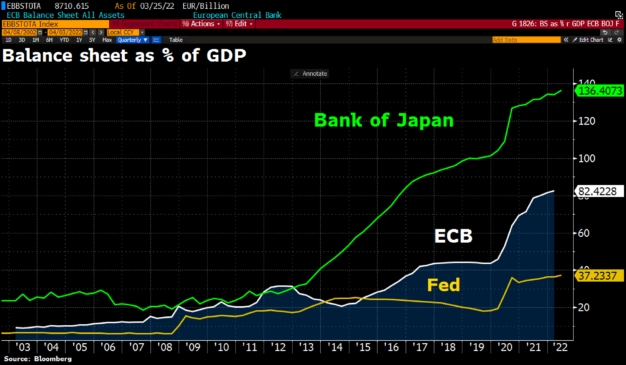Bitcoin (BTC) starts a new week and a new quarter as if it were starting the new year — at just over $46,000.
In what will seem like some serious deja-vu for hodlers, BTC/USD is at practically the same level it was on Jan. 1, 2022.
Price action has been quiet — too quiet, perhaps — in recent days, but behind the declining volatility, there are signs that the market is busy deciding future direction.
From macro to on-chain, there are in fact plenty of cues to keep an eye on in April, amid a backdrop of Bitcoin — at least so far — retaining its yearly open price as support.
Cointelegraph takes a look at five of these factors as they pertain to BTC price performance over the coming week.
Inflation meets fresh money printing
There has been much talk of the end of the post-COVID “easy money” period and the impact it’ll have on risk assets such as Bitcoin.
As the United States Federal Reserve pledges to reduce its record high balance sheet and keep raising key rates, commentators have sounded the alarm over what could be a shockwave hitting investment into crypto.
So far, however, there is little sign that a fundamental shift is underway, while in Asia this week, it seems like the opposite is true.
As highlighted by markets commentator Holger Zschaepitz, Japan’s central bank, the Bank of Japan (BoJ), has in fact added to its balance sheet but printing even more liquidity.
The BoJ already had the largest balance sheet relative to GDP, and that trend is only increasing, now at 136% of GDP.
For Zschaepitz, this is not only a surprise, but could be “the biggest monetary experiment in history.”
“In comparison, the ECB and the Fed look like amateurs,” he argued.
If more printing means more good times for risk assets, meanwhile, not everyone is even convinced that the long-vaunted balance sheet reductions will last. Central banks, they claim, will soon have no choice but to restart liquidity injections.
“There is no government, ever, that resisted the temptation to print money in order to pay its bills and placate its citizens. The government will never voluntarily go bankrupt. This is axiomatic. I challenge you to contradict me with evidence,” Arthur Hayes, ex-CEO of derivatives giant BitMEX, wrote in a blog post in March.
“Therefore, if your time horizon is in the years, it’s time. If you mess with the bull, you get the horns. Remember: it’s not gold or Bitcoin that is increasing in price, it’s a decrease in value of the fiat currency in which they are priced.”
The contrasting view, as signaled by last week’s yield curve inversion, pits rate hikes against the now high risk of a recession in the U.S. — a combination that should pressure Bitcoin and stocks alike.
Spot bulls aim for $50,000
The lack of volatility is the main talking point among Bitcoin traders and analysts as Monday gets underway.
Some classic but brief excitement around the weekly close faded within hours, with bears still failing to take the yearly open away as support, data from Cointelegraph Markets Pro and TradingView shows.
With that, BTC/USD is in exactly the same place as it was three months ago, but short-term price signals are already seeing some calling for continuation higher.
Among them is popular analyst TechDev, who highlighted Bitcoin’s first “volatility squeeze” since January playing out on the 12-hour chart.
12H $BTC volatility squeeze forming.
First since January. This one is during green trend bars.
Breakout arrow will indicate direction when it occurs. pic.twitter.com/5QZDl92p7f
— TechDev (@TechDev_52) April 4, 2022
TechDev used indicators including the Bollinger Bands volatility measure, which is now seeing BTC/USD surfing the middle of the channel with a skew to the upside.
As Cointelegraph reported, the odds are already on for an attack on the $50,000 mark, which will be Bitcoin’s first this year.
April itself, meanwhile, has much to live up to — in and of itself, this month has historically been “good” for Bitcoin.
Buyers usher coins out of exchanges in March
It’s no secret that a lot of Bitcoin has been leaving exchanges this year, but the latest data shows just how the supply squeeze is playing out.
According to on-chain analytics firm Glassnode, last month saw exchange outflows unlike many others — exchanges are down by the equivalent of almost 100,000 BTC.
Historically, there have only been two occasions in Bitcoin’s lifespan when outflows surpass the 100,000 BTC mark, making March’s among the highest.
“Aggregate exchange outflows of this magnitude have only been seen on a handful of occasions through history, with most being after the March 2020 liquidity crisis,” Glassnode added in Twitter comments alongside an annotated chart.

Should investors be recreating the bottom-buying behavior from after the COVID-19 crash, the implications should be clear, but may take a while to play out. In 2020, while BTC/USD rebounded after dropping 60% in days, it wasn’t until Q4 that price performance really began to change.
Fellow analytics platform CryptoQuant, which tracks the balances of 21 major exchanges, meanwhile shows that overall BTC stocks are now at their lowest since Aug. 1, 2018 — 2.303 million BTC.
A meandering downtrend in 2022 gathered pace in March, which saw a total of 77,000 BTC withdrawn to private wallets.

Never mind the altseason
An unusual event has occurred when it comes to Bitcoin’s relationship with altcoins — combined open interest and volume on altcoin derivatives markets has surpassed that of Bitcoin for the first time in over a year.
The move was noticed by crypto analytics platform Coinalyze, which openly suggested that the much-fabled “altseason” may now be here.
#ALTSEASON ? pic.twitter.com/O0rv3ttwMl
— Coinalyze (@coinalyzetool) March 31, 2022
“Could mean altseason, money flows into alts now,” founder Gabriel Dodan told Cointelegraph in private comments.
Such a perspective chimes with data showing considerable inflows into altcoins last week, which one commentator argued showed risk appetite among investors increasing.
Taking the limelight away from BTC may not be a dampener on performance per se, Dodan meanwhile added, thanks to volatility similarly draining away.
“On the other hand that makes BTC pretty stable because it is not over leveraged; it’s a good floor for BTC,” he explained.
Hash rate hits new all-time high
Hot on the heels of record difficulty for the Bitcoin network, hash rate has hit new all-time highs.
Related: Top 5 cryptocurrencies to watch this week: BTC, VET, THETA, RUNE, AAVE
In what shows miners’ belief in the long-term profitability of participating in the network, hash rate is now at 223 exahashes per second (EH/s), according to data resource MiningPoolStats.

While only an estimate of the processing power dedicated by miners, hash rate has never been higher, and according to proponents, will continue to grow regardless of external attempts to “reign in” Bitcoin.
“Bitcoin mining is pretty much the most anti fragile system designed by man,” Francis Pouliot, CEO of payment processor Bull Bitcoin, argued in a well-known blog post about Bitcoin hash rate and energy consumption last year.
“Any attack on Bitcoin is guaranteed to make Bitcoin stronger, which itself implies a higher price, a higher hashrate, and higher energy consumption.”
The topic of Bitcoin versus energy remains highly controversial, with multiple popular figures taking pains to explain what they see as a logical fallacy — that Bitcoin uses “too much.” Bitcoin does not waste energy, they contend, but merely converts it into something more useful as the most sound money ever created.
Hash rate, regardless of the narrative, meanwhile continues to grow, underscoring the basic bullish premise for investing in Bitcoin.
The views and opinions expressed here are solely those of the author and do not necessarily reflect the views of Cointelegraph.com. Every investment and trading move involves risk, you should conduct your own research when making a decision.



